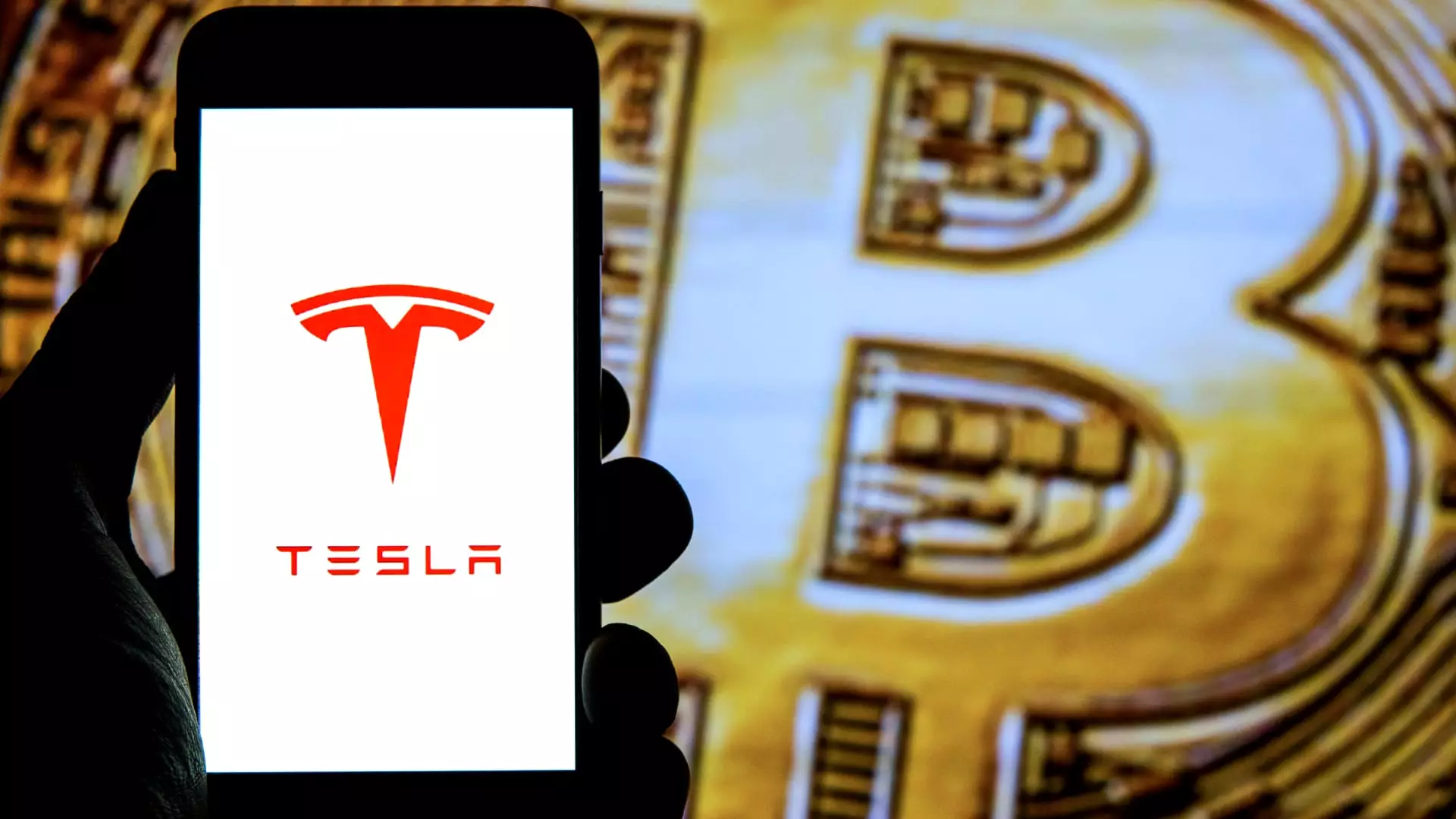Tesla’s recent financial disclosures reveal more than just fluctuating vehicle sales or earnings; they expose the often-overlooked digital asset holdings that could represent a strategic goldmine or missed opportunity. While Tesla’s core automotive business grapples with declining revenues and mounting external pressures, its substantial bitcoin holdings narrate a different story—one of potential that is seemingly underutilized. The company’s current valuation of digital assets stands at approximately $1.24 billion, a figure that, at first glance, appears impressive. However, when viewed through the lens of recent bitcoin price surges, it starkly underscores what could have been—a multi-billion dollar windfall that has long been dormant in Tesla’s treasury.
The key question becomes: why hasn’t Tesla capitalized fully on this digital asset? Despite the impressive rebound of bitcoin—up roughly sixfold from the 2022 lows—the company’s decision to sell off a lion’s share of its holdings at lower prices now appears shortsighted. This move, made amid a turbulent market, was driven by a need for liquidity and risk mitigation. Yet, the missed opportunity in not holding onto more bitcoin highlights a broader misjudgment in recognizing digital assets as a strategic reserve rather than merely speculative investments. Today, if Tesla had retained its original bitcoin stash, it might boast assets worth around $5 billion, far surpassing its current crypto valuation.
CEO Elon Musk’s Ambivalent Relationship with Cryptocurrency
Elon Musk’s influence on Tesla’s stance toward bitcoin has been both overt and ambiguous. His public persona as a crypto advocate drove Bitcoin’s price momentum early on, notably when he added #bitcoin to his Twitter bio, fueling a viral surge. However, in recent years, Musk’s silence on the matter indicates either a strategic shift or a cautious withdrawal. His focus has pivoted toward Musk’s grand ambitions in robotics, AI, and autonomous vehicles—particularly robotaxis and humanoid robots like “Optimus.” These ventures will undoubtedly require enormous capital and could benefit from the liquidity that holding significant bitcoin reserves might provide.
Yet, the inconsistency in Musk’s messaging betrays a missed opportunity. If the CEO truly believed in the long-term value of cryptocurrency, why did Tesla divest such a substantial portion of its holdings at a time when bitcoin was undervalued? The answer may lie in the tumultuous macroeconomic environment of 2022, marked by inflation, rising interest rates, and volatile markets—a perfect storm prompting risk aversion. However, given the recent rally and the strategic moves by regulators and governments to foster digital currency adoption, holding more bitcoin could have insulated Tesla from market downturns and enriched its financing options.
Market Dynamics and Strategic Missteps
Tesla’s failure to leverage its bitcoin holdings contrasts sharply with its ambitions for innovation and market dominance. The company’s recent earnings report showed consecutive declines in auto revenue, falling short of analyst expectations. The stock’s sharp decline—down 25% this year—reflects investor doubts about Tesla’s core business trajectory. Meanwhile, competitors and market analysts have signaled concerns over the high costs, regulatory hurdles, and a shifting landscape in electric vehicle and autonomous tech markets.
In such a financially strained environment, the underutilization of digital assets as a corporate cash reserve seems like a glaring misjudgment. The $284 million gains from bitcoin in the quarter, while notable, represent just a fraction of what could have been realized if more of Tesla’s holdings had been preserved. The company’s decision to liquidate a large portion of its bitcoin early in 2022, during bearish market conditions, limits its ability to capitalize on the current rally. The broader lesson here is that digital assets should not be just a side gamble but integrated into a broader financial strategy aimed at balancing risk and growth.
The Future of Tesla’s Digital Fortunes
Looking ahead, Tesla’s digital asset holdings remain a critical aspect of its financial landscape. With bitcoin’s current bullish momentum, there is a compelling argument that Tesla’s missed opportunity could turn into a strategic advantage if the company rethinks its approach. Instead of viewing cryptocurrencies as volatile assets to be traded or sold, Tesla could capitalize on their potential as a stabilizing financial instrument or a hedge against inflation.
The real question is whether Musk and Tesla’s leadership will recognize this untapped reservoir of value and adapt their strategy accordingly. Currently, Musk’s silence on bitcoin signals either disinterest or a strategic omission. Given the enormous scale of Tesla’s ambitions—robotaxi fleets, artificial intelligence, and humanoid robots—the company might find that holding digital assets could provide the flexibility and capital needed to innovate without heavy reliance on external financing.
Tesla’s crypto holdings are not just a side story but a reflection of the company’s broader strategic foresight. The digital assets buried within its balance sheet tell a story of potential that could reshape Tesla’s financial future, provided the leadership is willing to learn from past mistakes and embrace digital currencies as a core component of its growth blueprint. Whether Tesla will pivot or continue to overlook this trove remains to be seen, but one thing is clear: in the rapidly evolving landscape of finance and technology, missed opportunities are often the most costly ones of all.

